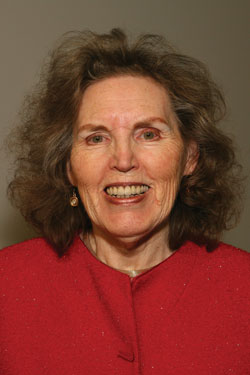
Diversity in the workforce and the boardroom helps U.S. businesses compete more effectively.
Caterpillar’s recent announcement that it is moving its global headquarters to Chicago took thousands of Peorians by surprise. For many, the news was shocking, and people wanted to be acquainted with the reasoning behind the decision.
After all, the company had committed to expanding its global headquarters in downtown Peoria, and purchased properties contiguous to its Adams Street location in preparation for it. Many believed it had to be the new CEO. But publicly traded companies are required to have a board of directors elected to act as representatives of their stockholders; the CEO’s job is to implement the direction and strategy set by the board. Therefore, it is nearly certain the decision was reached at the board level, and viewed as a strategic move for the CEO to drive.
Peorians have historically been proud of how their city helped Caterpillar reach its zenith as a Fortune 100 company. Yet many are unfamiliar with the role of corporate governance in introducing diverse hiring practices to Peoria—or that today’s Caterpillar board has made an effort to diversify its ranks. Though boardroom diversification is not a legal requirement, it has become a common practice for companies that do business globally, driven by the forces of a competitive marketplace.
Developing Diverse Human Capital
In 2002, I co-authored a white paper with Arthur A. Fletcher, PhD, advisor to several U.S. presidents and widely known as the "father of affirmative action," and Sylvester E. Williams III, a retired educator. Released at the National Press Club in Washington, DC that November, it summarized the significance of the decades-long push to develop diverse human capital in corporate America:
“The landmark 1954 Supreme Court decision in Brown v. Board of Education, the 1964 Civil Rights Act, President Johnson’s 1967 Executive Order 11246 (1967) establishing equal employment requirements, the 1969 ‘Revised Philadelphia Plan’ and HR 50-50 (1988), the Women’s Business Ownership Act, incrementally gave rise to a movement whose time had come. The movement—first known as Equal Employment Opportunity in the 1970s, then Affirmative Action in the 1980s and 1990s, and now Diversity Best Practices—has left its mark on America by enfranchising millions of people of color and white women in the U.S. economic mainstream.
By converting them to job holders, homeowners and community builders… assets all to their communities and their nation, America now has a diverse asset base that represents a rich resource of talent to tap for future employment and board service. To the more than seven billion people in the world, in all stages of development, America’s best practice of purposely developing its human capital on a diverse basis has set an enviable standard.”
Studies show that diversity, both in the workforce and in the boardroom, has helped American businesses compete more effectively in the 21st-century global marketplace. Today, not all Fortune 100 companies have readily available employment diversity statistics, and the jury is out on whether diverse boards of directors are a demonstrable indicator of diversity within their workforces. At this writing, Caterpillar’s corporate board features 13 directors, including two females, one African-American male and one Hispanic male. At 31 percent, the diversity of Caterpillar’s board surpasses that of most Fortune 100 companies, where minorities remain sharply underrepresented.
This is true at the CEO level as well. A recent Forbes report found just five African-American CEOs among Fortune 500 firms, while females comprised just 4.4 percent of CEO positions among S&P 500 companies. Though the ranks of corporate boards and executives are more diverse than they were a decade ago, progress has stalled in recent years. Continued efforts to recruit diverse director candidates and next-generation business leaders are imperative to protect America's standing in the global marketplace and ensure our national economic security, which depends upon companies fostering inclusive, quality governance.
Leadership in a Changing World
Diversity in employment and in the boardroom was driven by 20th-century American leadership. After World War II, our nation realized it needed a strong, capable workforce to compete in a changing world. Tending to that need required citizen demand, federal legislation and tremendous dedication.
Today, diversity’s role in helping America become a world leader has paved the way to include a growing melting pot of citizenry in the economic mainstream. This is what continues to attract people from other nations to want to join our free and inclusive society. This is also why people have chosen and continue to choose Peoria to be our home. iBi
Linda K. Bolliger is a social entrepreneur and widely regarded thought leader on diversity and inclusion. She helped develop the City of Peoria’s first affirmative action plan in the early 1970s and was the founder of Boardroom Bound, a pioneer in the boardroom diversification movement.

